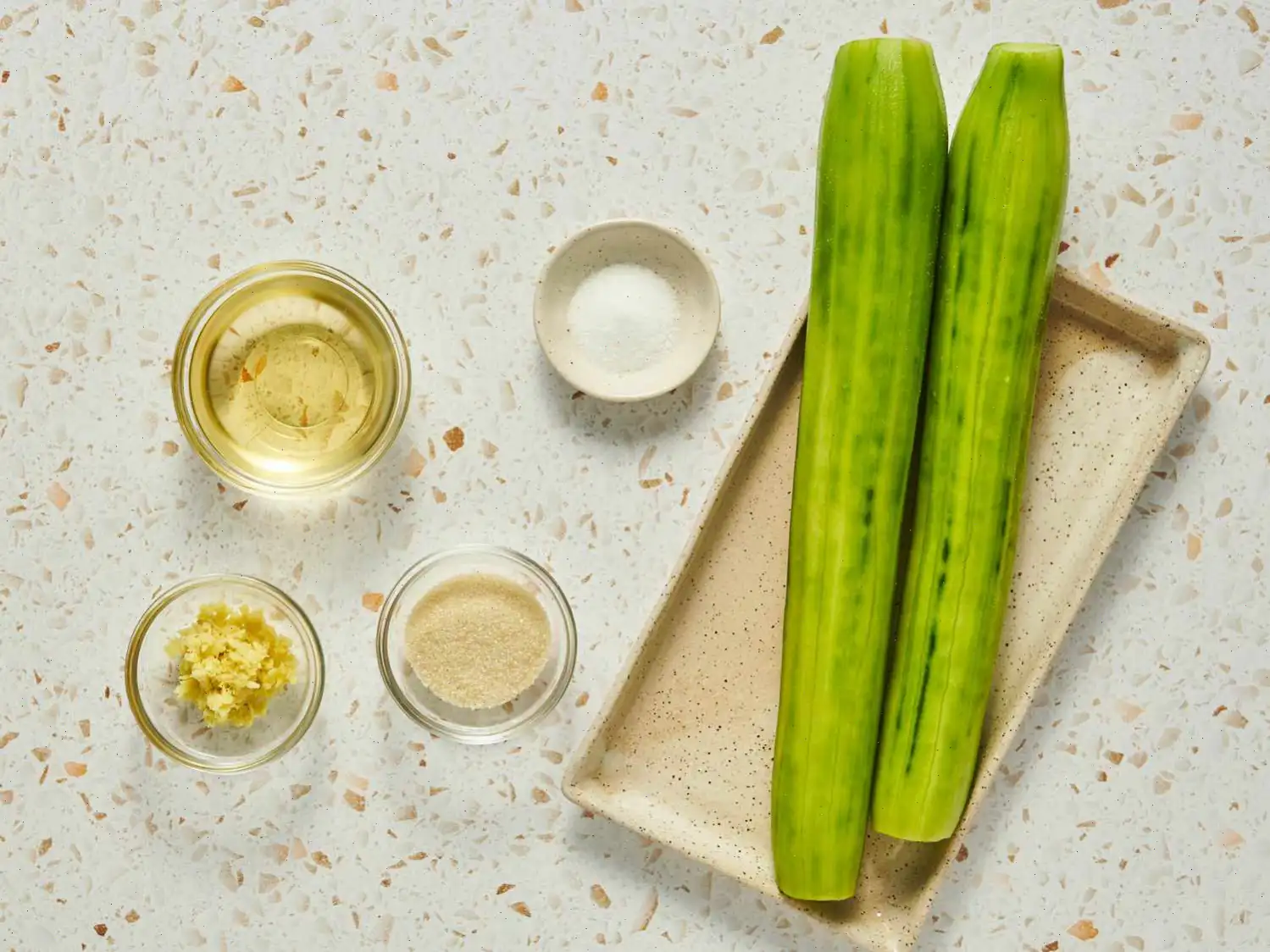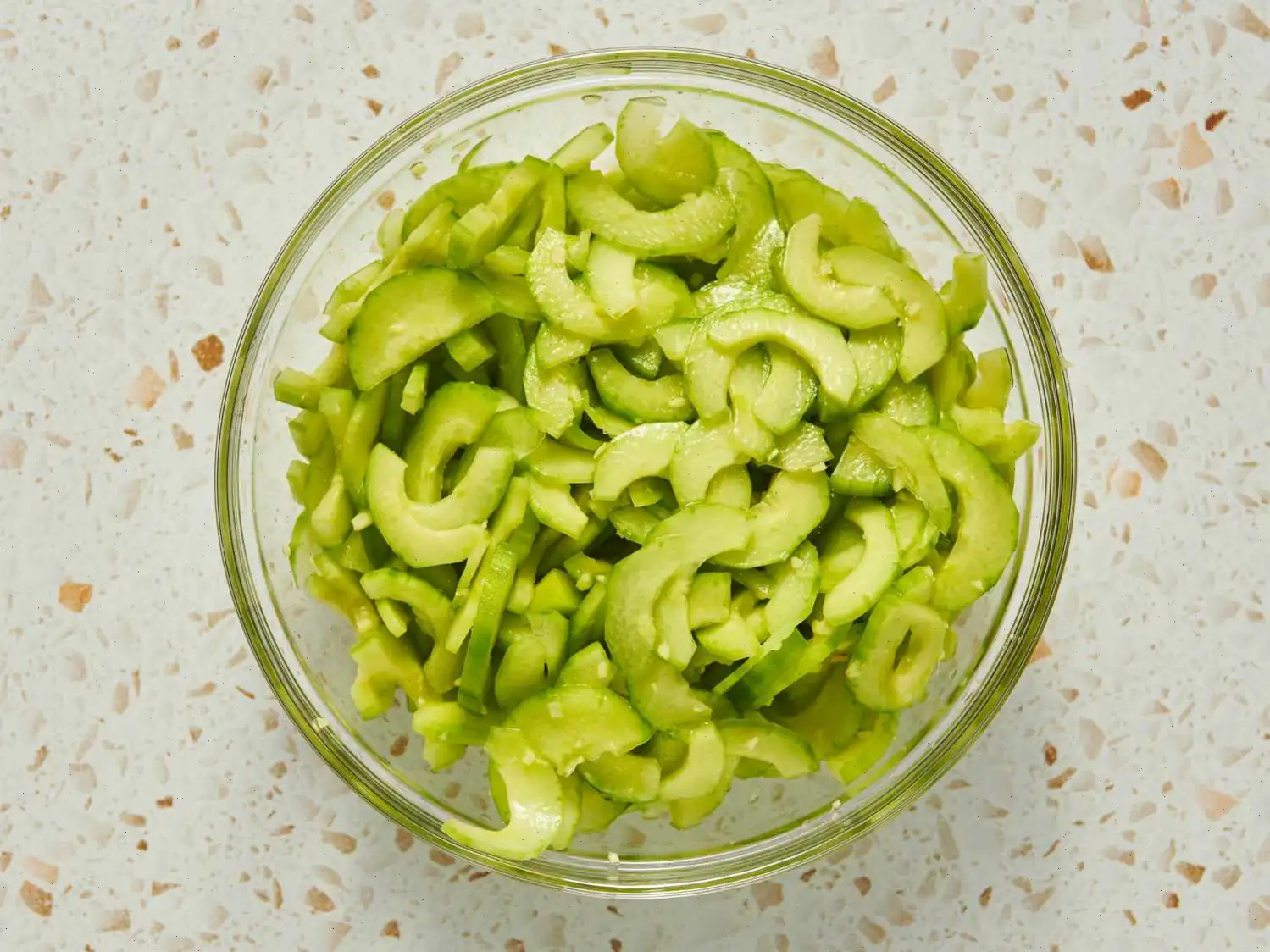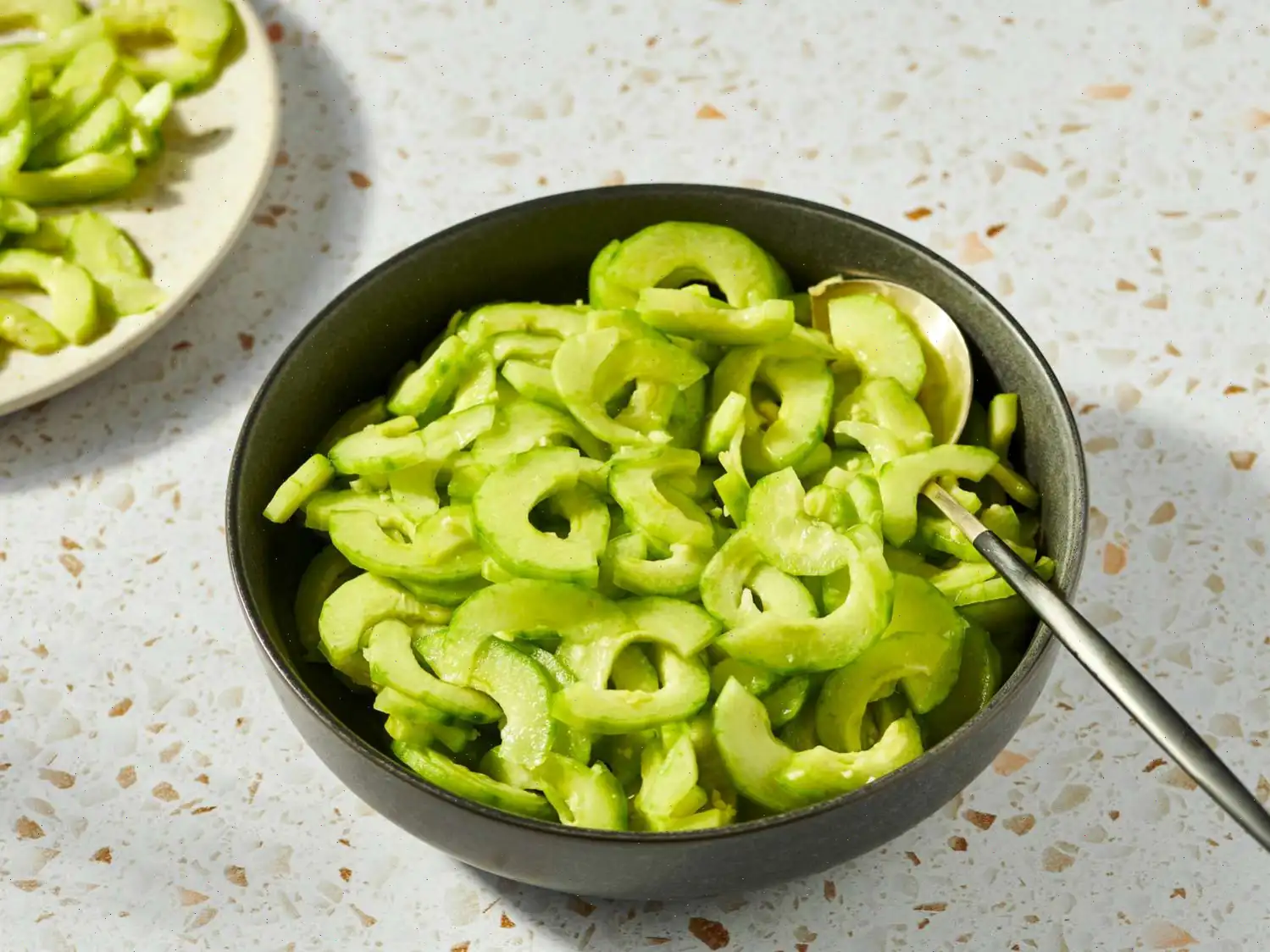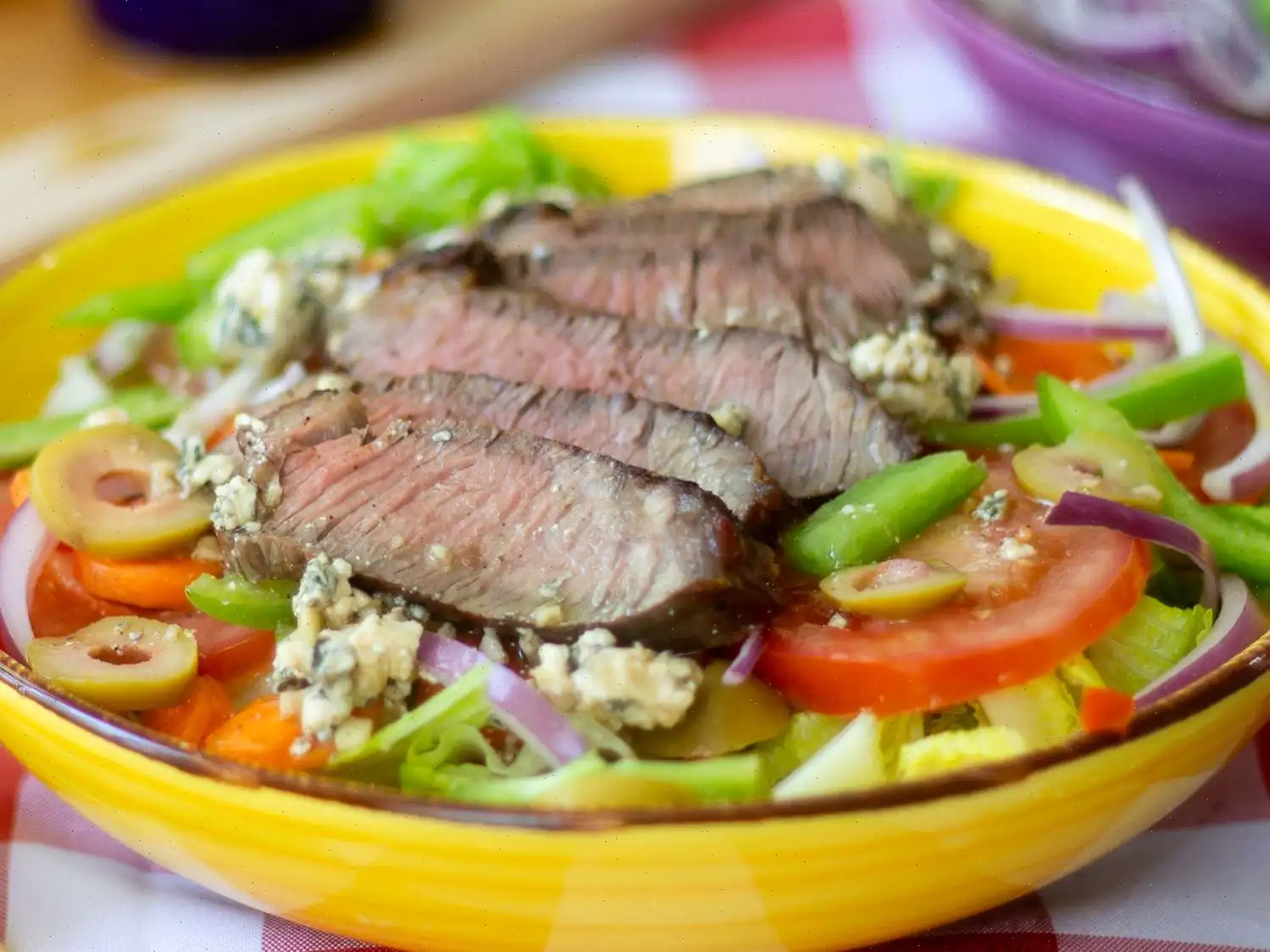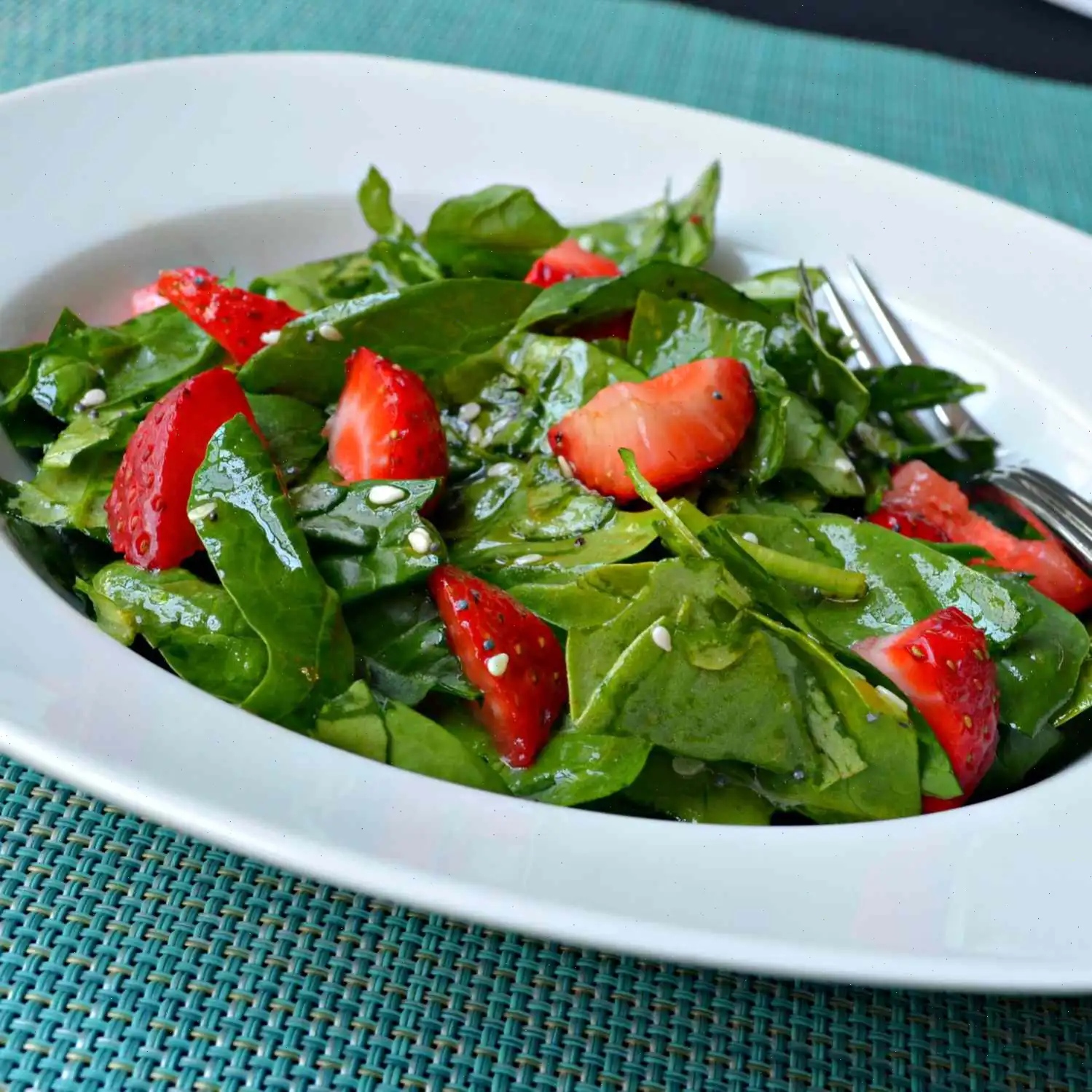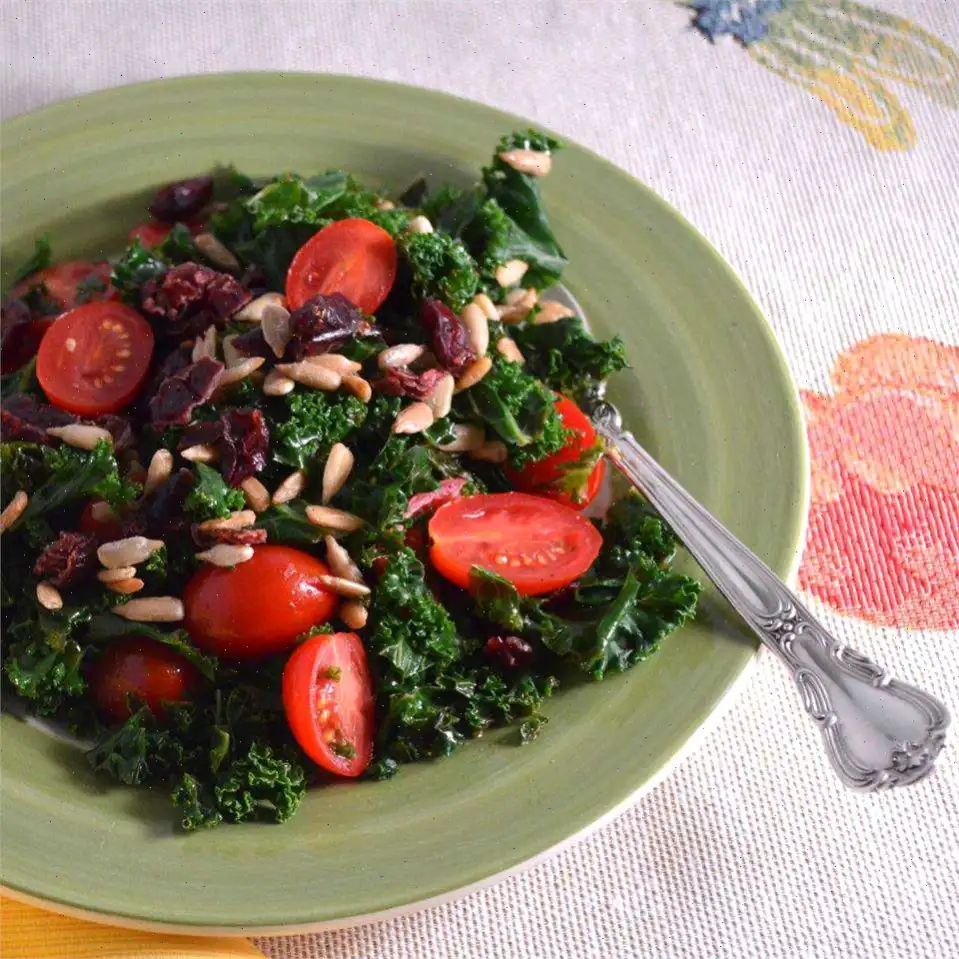
Sunomono (Japanese Cucumber Salad) Recipe
Ingredients:
- 2 large cucumbers, peeled
- cup rice vinegar
- 4 teaspoons white sugar
- 1 teaspoons minced fresh ginger root (or to taste)
- 1 teaspoon salt (or to taste)
Directions:
- Gather all the ingredients and prepare your workspace.
- Slice the cucumbers in half lengthwise, and carefully scoop out any large seeds.
- Cut the cucumbers crosswise into very thin slices, ensuring they are as uniform as possible.
- In a small bowl, combine the rice vinegar, white sugar, minced ginger, and salt. Stir well to ensure everything is thoroughly mixed.
- Add the cucumber slices to the bowl with the dressing and toss gently to coat the cucumbers evenly with the mixture.
- Let the salad sit for at least 10 minutes before serving to allow the flavors to meld.
Nutrition Facts (per serving):
| Nutrient | Amount | % Daily Value* |
|---|---|---|
| Calories | 27 | |
| Total Fat | 0g | 0% |
| Sodium | 467mg | 20% |
| Total Carbohydrate | 6g | 2% |
| Dietary Fiber | 1g | 3% |
| Total Sugars | 3g | |
| Protein | 1g | 1% |
| Vitamin C | 3mg | 4% |
| Calcium | 16mg | 1% |
| Iron | 0mg | 1% |
| Potassium | 168mg | 4% |
* Percent Daily Values are based on a 2,000-calorie diet. Your daily values may be higher or lower depending on your calorie needs.
** Nutrient information is not available for all ingredients. The amount is based on available nutrient data.
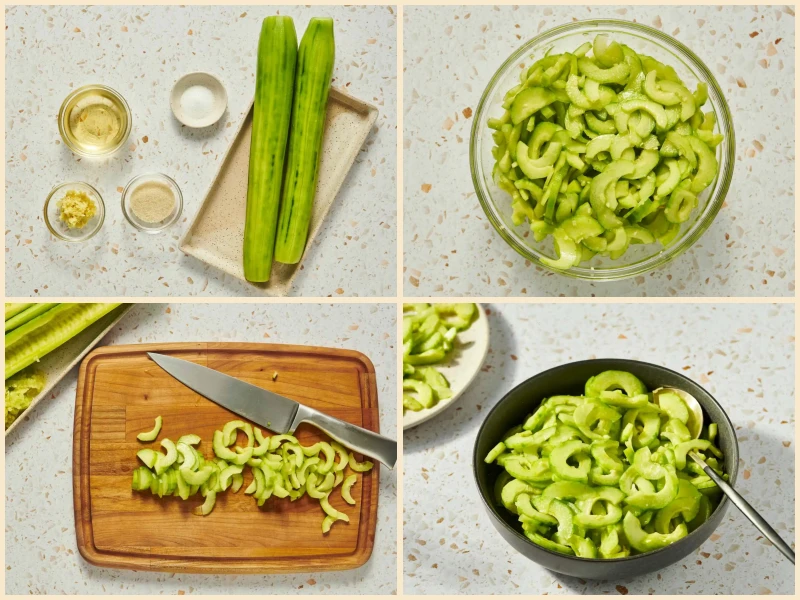
Sunomono is a traditional Japanese dish that is both refreshing and simple, often enjoyed as an appetizer or side dish. The salad typically features thinly sliced cucumbers dressed in a sweet, tangy mixture of rice vinegar, sugar, and salt, with a hint of ginger for added flavor. Known for its lightness, Sunomono is popular during the warmer months, offering a cool contrast to richer, heavier dishes.
History of Sunomono
Sunomono, literally meaning "vinegar things" in Japanese, has deep roots in Japanese cuisine. It is a staple of the country's culinary tradition, particularly in the Kansai region, where the use of vinegar-based dishes is quite prevalent. The dish likely evolved from a method of pickling vegetables in vinegar to preserve them, a common practice in ancient Japan. Over time, Sunomono became a more refined dish, enjoyed for its balance of sweet, sour, and savory flavors, often served as a refreshing complement to heavier main courses like sushi or tempura.
Regional Variations
While Sunomono is beloved throughout Japan, regional variations exist depending on local ingredients and preferences. In the Kansai region, Sunomono is often made with a base of rice vinegar and sugar, but variations using different vinegars, such as apple or red wine vinegar, can be found in other regions. Some versions incorporate seafood, like shrimp or octopus, and the dish may be garnished with sesame seeds, sliced seaweed, or even shiso leaves for added flavor and texture.
Differences from Similar Dishes
Sunomono is often compared to Western-style cucumber salads, but the key difference lies in the dressing. While a typical cucumber salad in the West might use mayonnaise or a creamy dressing, Sunomono is known for its light, vinegar-based dressing. This makes it much more tangy and refreshing, with a clean taste that contrasts sharply with richer dishes. Additionally, while other cucumber salads might be creamy or include various vegetables, Sunomono keeps it simple, usually sticking to just cucumbers, vinegar, sugar, and salt. Some variations may add radishes, carrots, or seafood for extra flavor.
Where is Sunomono Typically Served?
Sunomono is a versatile dish that can be found at many Japanese restaurants, particularly as part of a multi-course meal (kaiseki) or as a side dish with sushi and sashimi. It is often served as a light appetizer to cleanse the palate before the main course. Because of its refreshing nature, it is especially popular during the warmer months, often accompanying grilled meats or fried foods. The dish is also a favorite at Japanese celebrations and festivals, where it serves as a light, cooling counterpoint to heavier, spicier foods.
Interesting Facts About Sunomono
- In addition to cucumbers, Sunomono can be made with other vegetables such as radishes or wakame (a type of seaweed), depending on regional preferences or seasonal availability.
- The dish is often served with sesame seeds or toasted sesame oil, which enhances the flavor and adds a satisfying crunch.
- Sunomono is considered a low-calorie, healthy dish that is rich in vitamins and minerals, making it a great option for those seeking a light, nutritious side dish.
- In Japan, it's common to use "ume vinegar" (plum vinegar) in place of rice vinegar for a more tart, fruit-forward taste. This variation is typically found in regions where plums are more abundant.
- Sunomono has made its way into global cuisine, particularly in health-conscious food cultures, as a refreshing, quick, and easy salad option.
For those who love a clean, tangy, and refreshing dish, Sunomono is the perfect choice, offering a balance of flavors that is both simple and satisfying.
FAQ about Sunomono (Japanese Cucumber Salad) Recipe
Comments
Jose Adams
03/08/2025 02:25:30 PM
Wonderful recipe. I appreciate it. It's important to follow the recipe as it is written without too many alterations. If you make significant changes, it becomes a different dish altogether. It's essential to respect the original recipe and give credit where it's due. If you modify it extensively, it's better to create your own recipe rather than rate someone else's based on your adjustments.


